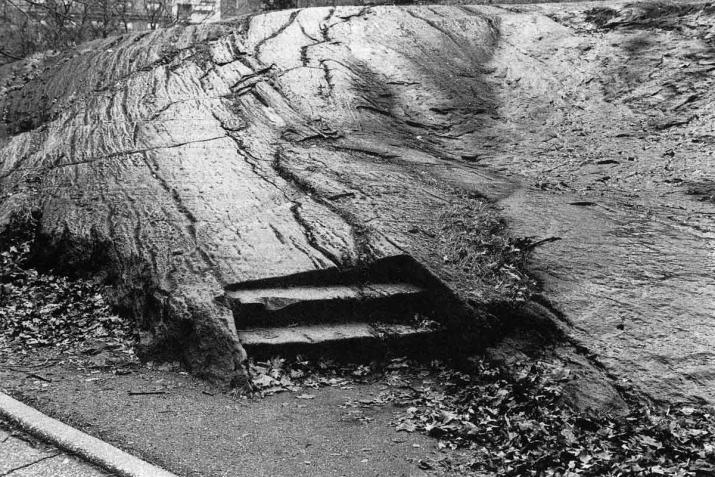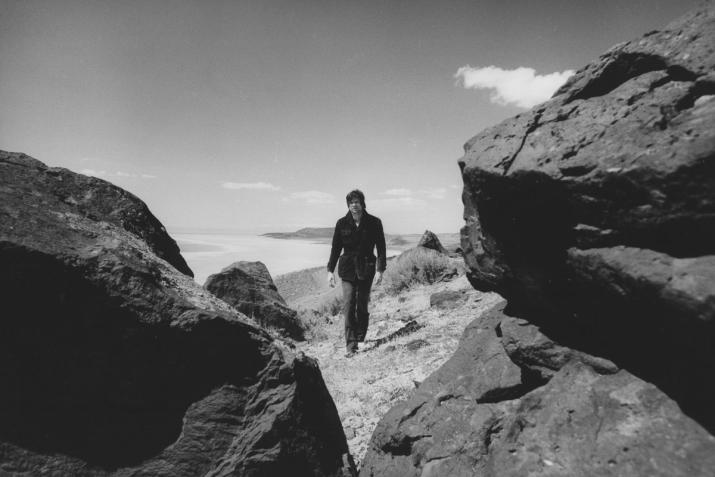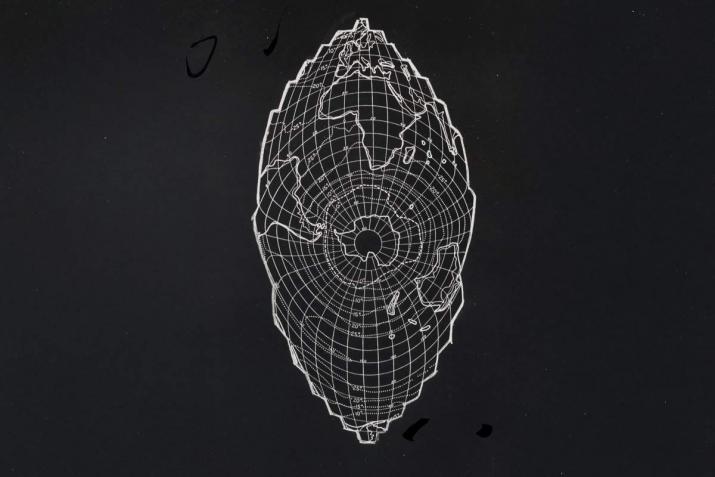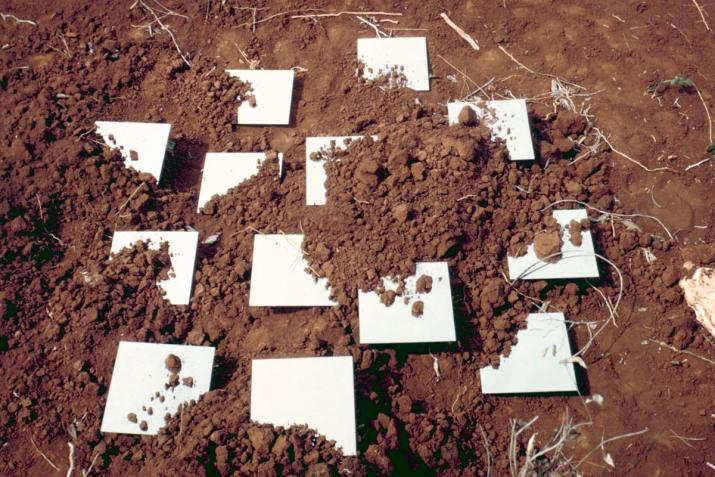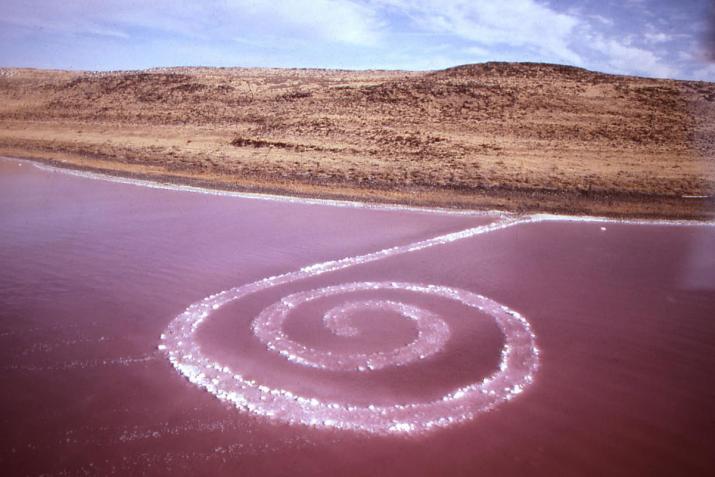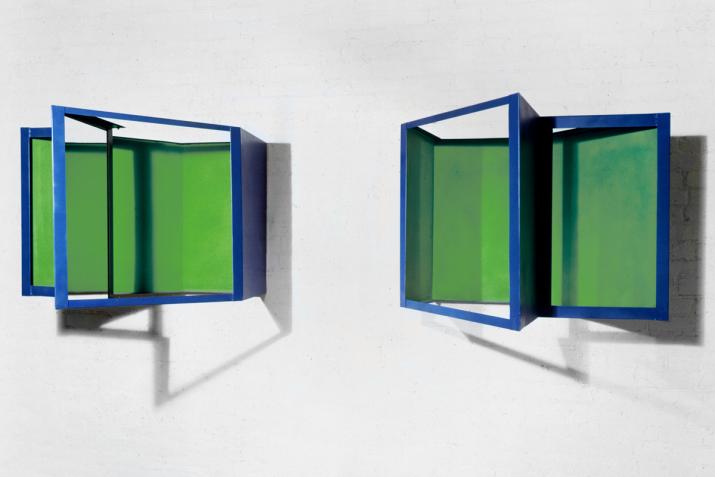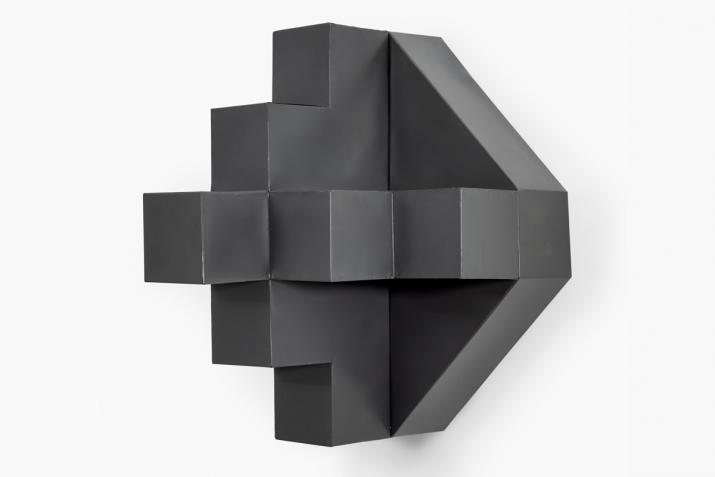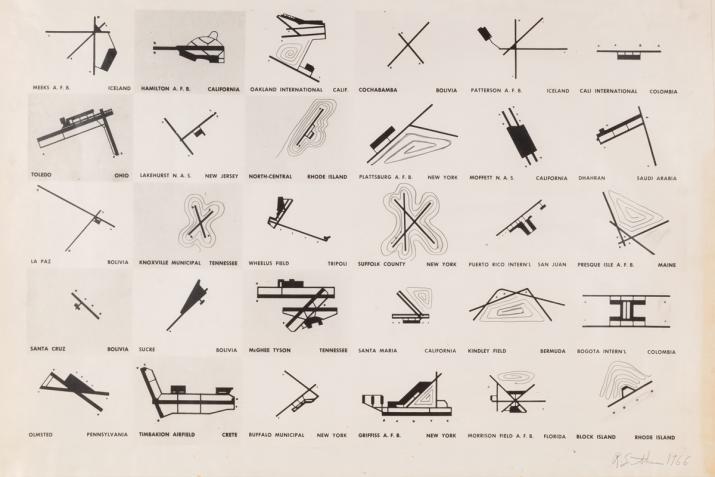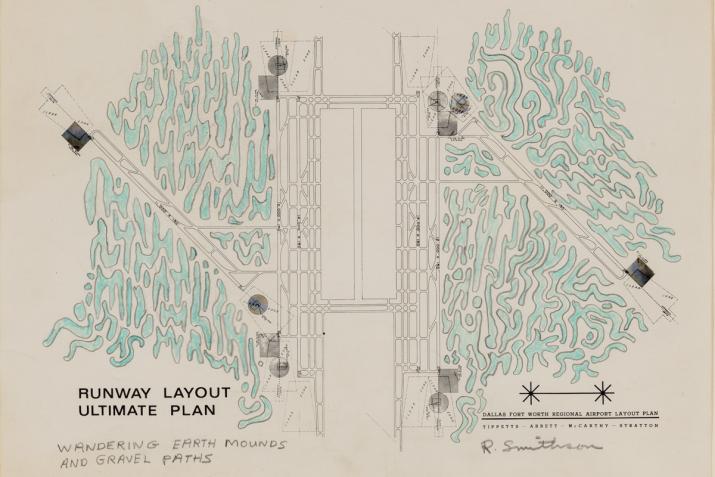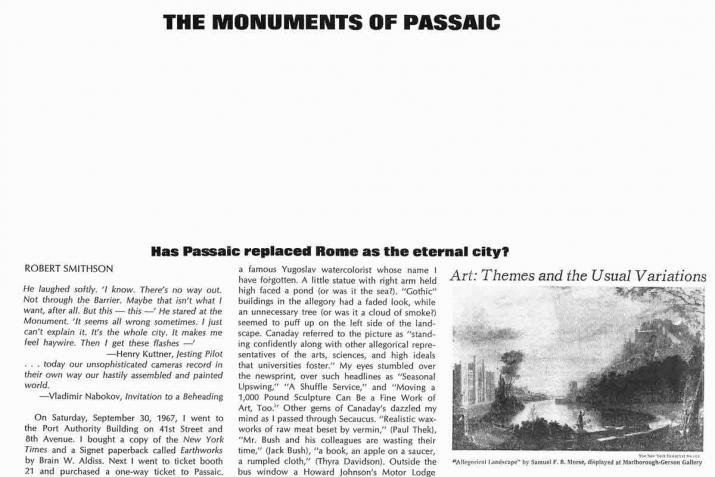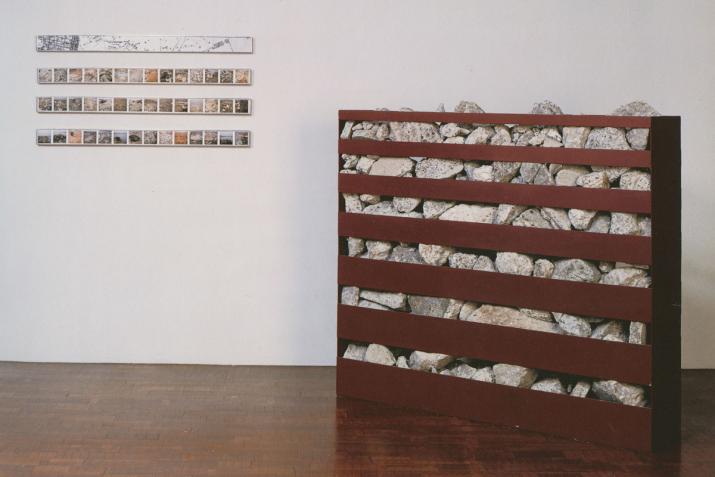Cultural Confinement
A Cinematic Atopia
Going to the cinema results in an immobilization of the body. Not much gets in the way of one’s perception. All one can do is look and listen. One forgets where one is sitting. The luminous screen spreads a murky light throughout the darkness. Making a film is one thing, viewing a film another. Impassive, mute, still the viewer sits. The outside world fades as the eyes probe the screen. Does it matter what film one is watching? Perhaps. One thing all films have in common is the power to take perception elsewhere.
A Museum of Language in the Vicinity of Art
A Short Description of Two Mirrored Crystal Structures
Both structures have symmetric frameworks, these frameworks are on top of the faceted mirrored surfaces, rather than hidden behind the surfaces. The frameworks have broken through the surfaces, so to speak, and have become "paintings." The frameworks are light blue with rose mirrors and yellow with blue mirrors.
Incidents of Mirror-Travel in the Yucatan
Untitled
Across the country there are many mining areas, disused quarries, and polluted lakes and rivers. One practical solution for the utilization of such devastated places would be land and water recycling in terms of “Earth Art.” Recently, when I was in Holland, I worked in a sand quarry that was slated for redevelopment. The Dutch are especially aware of the physical landscape. A dialectic between land reclamation and mining usage must be established. The artist and the miner must become conscious of themselves as natural agents. In effect, this extends to all kinds of mining and building.
The Spiral Jetty
Interpolation of the Enantiomorphic Chambers
Entropy and the New Monuments
A Sedimentation of the Mind: Earth Projects
The earth’s surface and the figments of the mind have a way of disintegrating into discrete regions of art. Various agents, both fictional and real, somehow trade places with each other—one cannot avoid muddy thinking when it comes to earth projects, or what I will call “abstract geology.” One’s mind and the earth are in a constant state of erosion, mental rivers wear away abstract banks, brain waves undermine cliffs of thought, ideas decompose into stones of unknowing, and conceptual crystallizations break apart into deposits of gritty reason.
Towards the Development of an Air Terminal Site
Aerial Art
A Tour of the Monuments of Passaic, New Jersey
A Provisional Theory of Nonsites
By drawing a diagram, a ground plan of a house, a street plan to the location of a site, or a topographic map, one draws a “logical two dimensional picture.” A “logical picture” differs from a natural or realistic picture in that it rarely looks like the thing it stands for. It is a two dimensional analogy or metaphor—A is Z.

